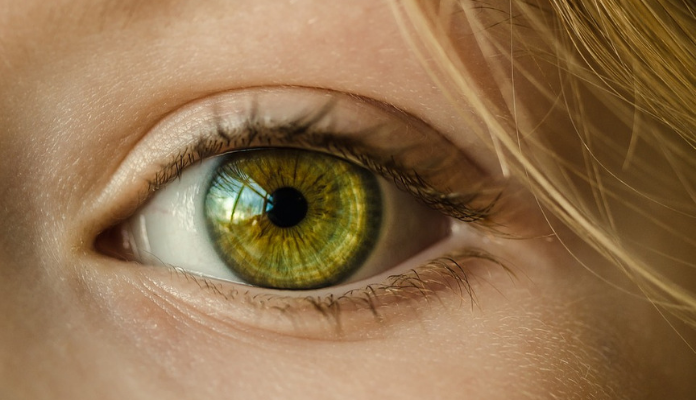Caring For Skin Around Your Eyes
Also known as periocular, the skin around the eyes is precious. This skin is 10-15 times thinner than facial skin and is also the most sensitive. The periocular skin has both functional and cosmetic functions. It displays our expressions and emotions, general health and also protects our eyes. Also, intrinsic and extrinsic changes in the body are clearly seen in forms of variation in the texture and colour of the periocular skin.
The changes around the eyes and its skin can be due to natural aging or due to natural aging or due to eye and body disorders
The delicate skin around the eyes has fewer oil glands and is elastic like rubber. The multilayer skin has a deep fascia-like layer for smooth gliding of the upper layers, the muscle layer for movements and expressions, the middle dermal layer which forms the main supportive skeleton and contains collagen (the elastic material), nerves and blood vessels and the upper most layer of epidermis which gives colour, texture and suppleness to the skin.
The skin regenerates and rejuvenates itself every 30-50 days with an upward migration of new cells from the deeper layers of the skin and the shedding of older cells of the top layer of skin. The changes around the eyes and its skin can be due to natural aging and other eye and body disorders. This can manifest in the form of aging lines, wrinkles, lose and saggy skin, lumps and bumps, swelling, puffiness and pigmentation.
Changes Due To Aging
Intrinsic and extrinsic factors are responsible for general aging of the body and the skin. The skin becomes wrinkly, loose, dry, dull, saggy and pigmented. The eyelid skin can be seen hanging along the brow area forming an extra fold, or prominent lid bags giving a puffy look to the eyes and showing deep wrinkles during times of expression. The other changes are formation of brown aging and photo damage spots, dark circles and deepening of the inner most area along the lower lids known as tear trough. These changes give a tired, dull and aged look to the face.
Changes Due To Medical Conditions
Common conditions that lead to changes in the periocular are hypertension, diabetes. thyroid problem, allergy and focal infections and swellings. The skin in chronic systemic disorders retains more water and becomes putty and stretched out. Water bags present along the cheek are more prominent in the mornings than evenings. These are also known as testoons.
Allergy leads to dry, scaly and itchy skin. This in turn leads to heavy pigmentation. The oil glands around the eyelids can get infected with diabetes or allergy disorders leading to formation of hot boils or styes. These get converted to hard bumps called chalazion.
Dandruff like deposits over the lashes known as blepharitis is another sign of allergy and oil gland dysfunction.
High cholesterol levels are seen as yellow patchy deposits along the inner corners of the eye called xanthelasmas. White patches in vitiligo, loss of lashes in cases of chronic swelling of lids or suspected leprosy, hard and lumpy deposits in cases of systemic malignancies and focal tumours and infections are some ot the other changes seen.
Tips For Healthy Periocular Skin
- It is important not to try any treatment or products on your own. At the first onset of change, it is best to meet an ophthalmic plastic and cosmetic surgeon.
- Lifestyle changes in the form of healthy eating, exercising and drinking at least eight glasses of water are common mantras.
- Management of systemic conditions like diabetes, hypertension, thyroid, allergies is a must, before relying on only topical skin products.
- Hygiene in the form of gentle washing. touching eyes and skin with clean hands, timely removal of makeup, use of high quality cosmetics and skin care products is important.
- Use of oral supplements especially omega fatty acids has shown results in delaying the structural and functional changes of the skin elements and cells.
- Use of medicated skin products prescribed by specialists to treat various changes enlisted above is a must. Common ingredients in these products to fight aging are exfoliators, moisturizers, de-pigmentation agents, antioxidants and collagen remodelers.
- Abstinence from smoking and drinking goes a long way. Nicotine leads to contraction of blood vessels while alcohol leads to dehydration.
- Use sunscreen when outdoors along with sun glasses to avoid and delay extrinsic skin damage.
- Changes secondary to medical disorders definitely need timely intervention to get the right diagnosis and plan a tailored management. Delay in treatment often leads to complications and aggressive treatment options.
- Treatment for medical disorders can be surgical or non- surgical based on the site of location and severity of damage. For example. tumours have to be excised with reconstruction of the tissues and xanthelasmas are often radio-ablated.
- A disciplined lifestyle, by practising common preventive measures and the following general tips shared, can help maintain healthy and youthful skin around the eyes.
